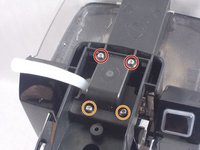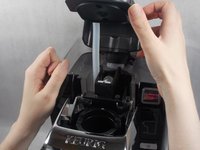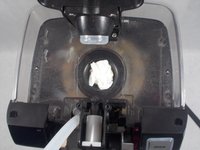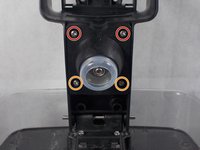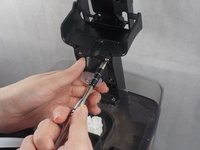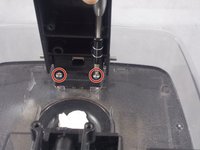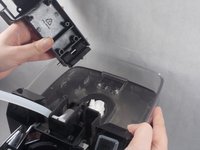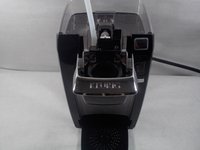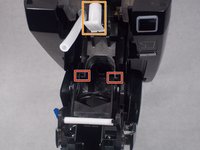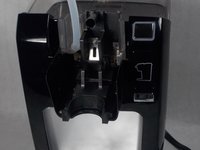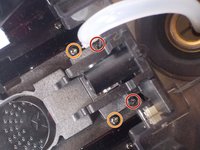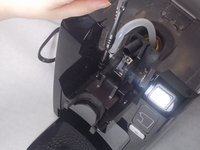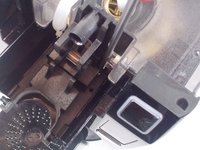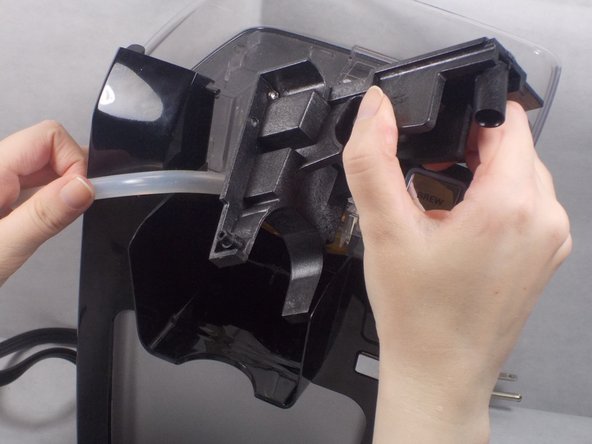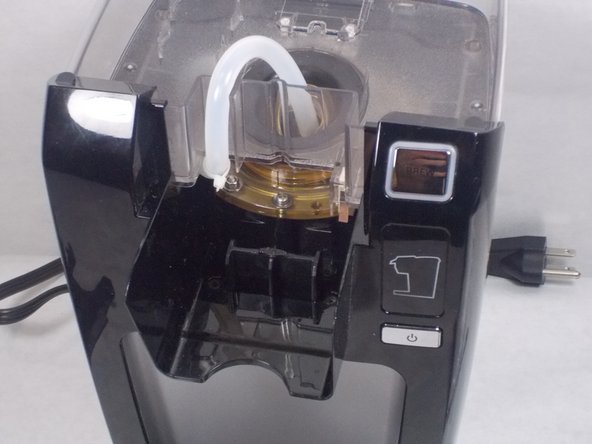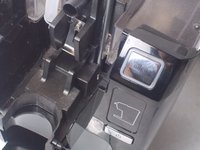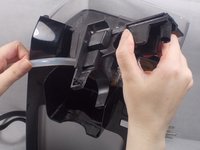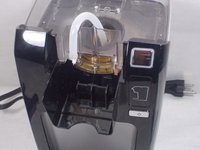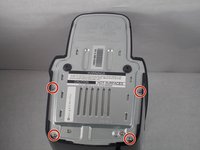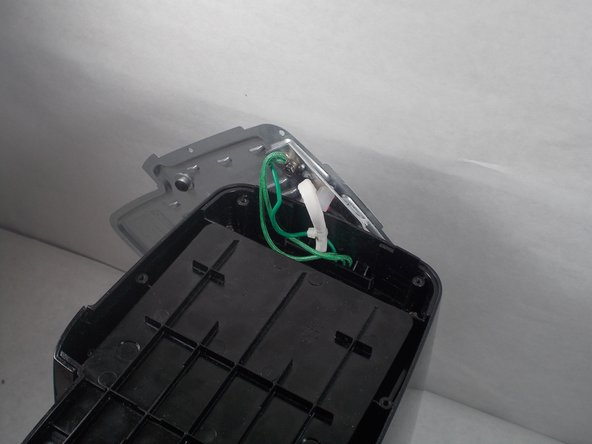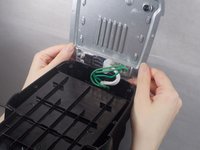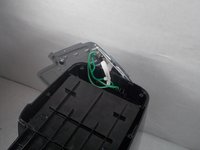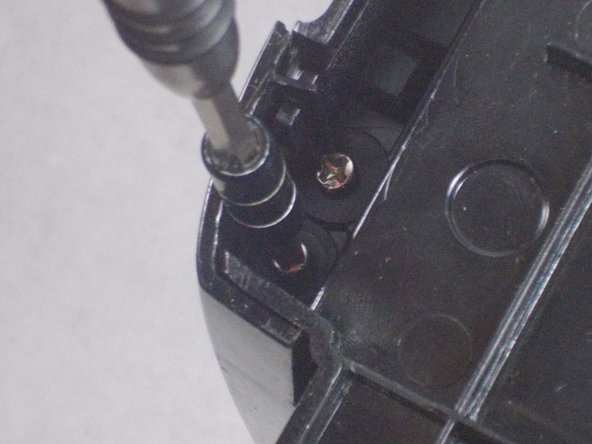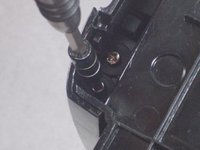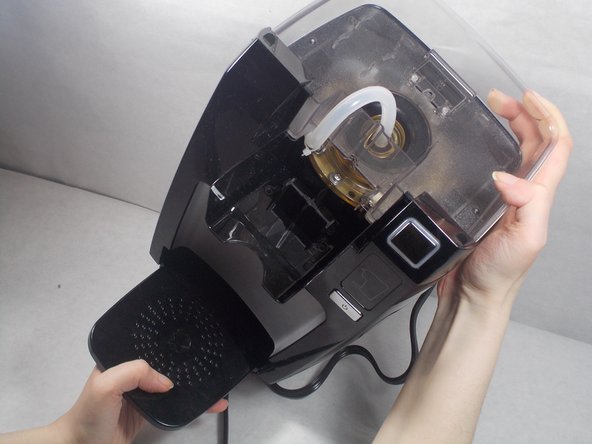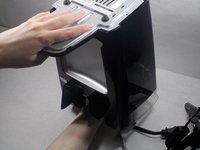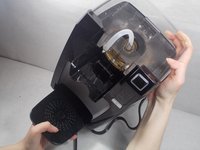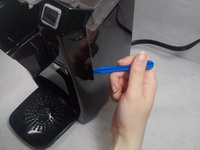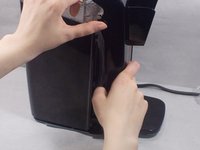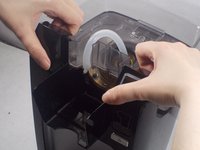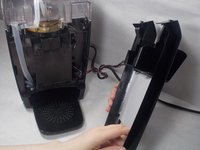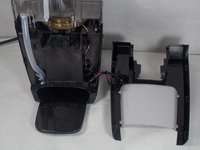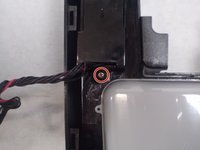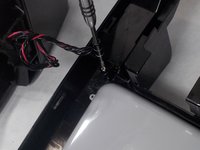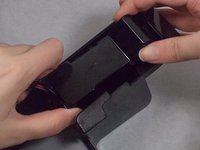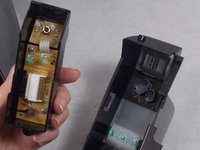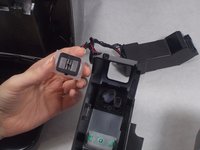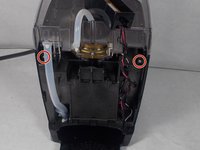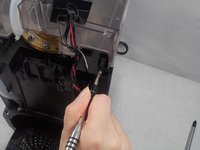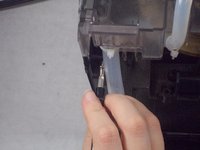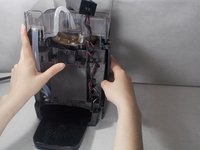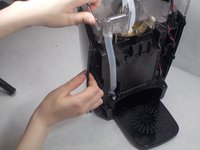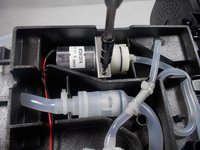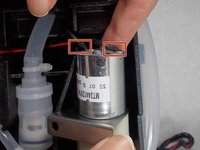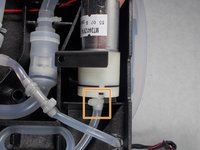crwdns2915892:0crwdne2915892:0
The Water Pump within the Keurig K10 MINI Plus is a deeply embedded part. Due to the nature of it being attached both to an electrical source and a water source, it is not recommended to attempt this guide without previous familiarity with both.
crwdns2942213:0crwdne2942213:0
-
-
Lift the cold water reserve lid up to reveal its hinge.
-
Using either the metal spudger or the opening tool, gently pry the plastic out of the metal axle.
-
-
-
Repeat the last step on the other hinge, making sure to keep a firm grasp on the lid as it comes off to avoid dropping it.
-
-
-
Remove two 9 mm Phillips #1 screws.
-
The screws are located on the top of where the K-Cup would be.
-
-
-
Once you remove the screws, the top cover should come out.
-
You will then want to remove these screws which are the same size.
-
-
-
Once you get those removed, you are going to want to pull on the hose until it pops off.
-
Once the hose comes off, the needle will fall out by itself.
-
-
-
Remove two 14 mm Phillips #2 screws.
-
Remove two 12 mm Phillips #2 screws.
-
Lift the arm off the assembly. This will reveal the tank hole as shown.
-
-
-
Remove two 9.7 mm Phillips #2 screws.
-
Remove two 11.5 mm Phillips #2 screws.
-
Remove the cold water reserve arm's plug from the arm itself in order to allow access to the base screws.
-
-
-
Remove two 18 mm Phillips #2 screws.
-
Finally, detach the arm from the cold water reserve basin.
-
-
-
-
Pull the head assembly forward to reveal the two plastic axle points that keep the head assembly attached to the base.
-
-
-
Using the iFixit Opening Tool, gently pry apart the plastic head assembly piece from both the body's axles and its left to remove it.
-
-
-
Remove two 14 mm Phillips #2 screws.
-
Remove two 12 mm Phillips #2 screws.
-
-
-
Detach the seat by giving it a firm tug up.
-
-
-
Flip over the device.
-
Remove four 11.5 mm Phillips #2 screws.
-
-
-
Reposition the metal lid while keeping the heat sink attached in order to reach the screws underneath.
-
-
-
Remove two 11.5 mm Phillips #2 screws.
-
-
-
Turn the device right side up again.
-
-
-
Begin to pry open the front plate using the iFixit Opening Tool as shown.
-
Pry upwards in order to take the cover off.
-
-
-
Remove one 9.7 mm Phillips #2 screws.
-
-
-
Remove the button housing to access the buttons.
-
The brew buttons can be easily popped out of place by pushing inwards from the front of the unit.
-
-
-
Remove two 9.7 mm Phillips #2 screws.
-
-
-
Pry open the left, right, and back of the back plate by pulling out and up.
-
-
-
Rotate the device to reveal the pump side.
-
Remove one 9.7 mm Phillips #2 screw.
-
-
-
Remove the power connectors attached to the water pump.
-
Remove the water hose attached to the water pump.
-
Remove the water pump itself.
-
To reassemble your device, follow these instructions in reverse order.
To reassemble your device, follow these instructions in reverse order.
crwdns2935221:0crwdne2935221:0
crwdns2935229:010crwdne2935229:0
crwdns2947412:06crwdne2947412:0
Great directions on how to disassemble and get at the water pump. I just can’t find where or how to order a replacement pump. Can you help?
I was very surprised I needed a guide to take this silly little coffee maker apart, but boy did I.
I've rebuilt entire engines that were less of a headache.
Thanks for the great write up (especially the heatsink pointer, never can find the last tube of thermal paste I bought)
this is great, it helps save my Keurig K10. I was able to open it up, and clean the pump motor due to corrossion, and it works fine now.
Thank you a lot!!! you save me too much time
Thanks for the write-up. Keurig sure didn't make the disassembly process on this machine very intuitive!
I had a room-mate that put coffee grounds in the water receptacle and I had to completely dismantle the machine to clean it all out. The check valve was where the crud had built-up.
I found it very interesting to discover that the pump is actually an air pump that forces the water out of the heating chamber and into the coffee pod. The purpose of the loop of smaller tubing is to prevent water from being forced into the air pump.



















